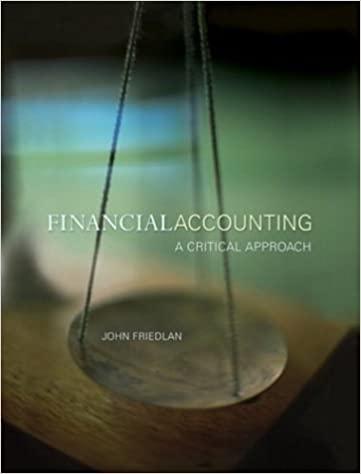(Comparing the effects of different methods of accounting for bad debts, LO 3) You have obtained the...
Question:
(Comparing the effects of different methods of accounting for bad debts, LO 3)
You have obtained the following information about Eskasoni Inc. (Eskasoni) from the company’s 2005 annual report:
Required:
Eskasoni’s year end is November 30.
Sales for the year ended November 30, 2005 were $4,235,000; 90% of sales are credit sales.
The balance in Accounts Receivable on November 30, 2005 was $610,000.
The balance in Allowance for Uncollectable Accounts on November 30, 2004 was $48,000.
During fiscal 2005, Eskasoni wrote off $42,000 of accounts receivable.
The bad debt expense can be estimated as 1.5% of credit sales or 9.5% of yearend accounts receivable.
Net income for the year ended November 30, 2005, including all revenues and expenses except for the bad debt expense, was $250,000.
Determine the bad debt expense for the year ended 2005, assuming that Eskasoni used:
i. the direct-write-off method for accounting for uncollectable accounts.
ii. the percentage-of-credit-sales method for accounting for uncollectable accounts.
ili. the percentage-of-receivables method for accounting for uncollectable accounts. }
. What would be the balance in Allowance for Uncollectable Accounts on November 30, 2005 using the three methods identified in part (a)?
. Prepare the journal entry required to record the bad debt expense under each of the three methods identified in part (a).
. What would net income be for 2005 under each of the three methods identified in part (a)?
. Explain why the three methods identified in part
(a) provide different bad debt expenses.
Which method of determining the bad debt expense and the allowance for uncollectable accounts is best? Explain.
Step by Step Answer:






